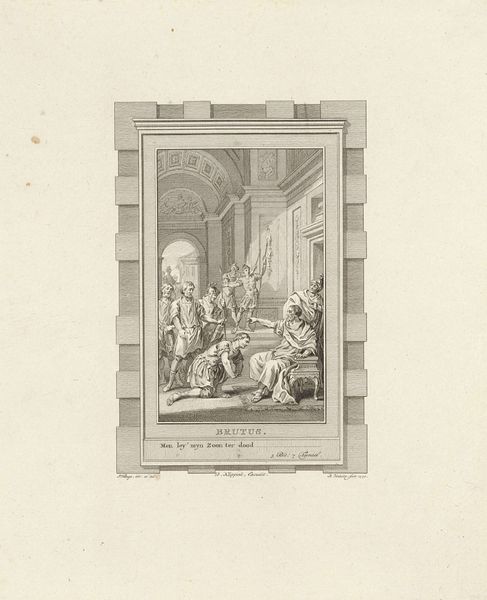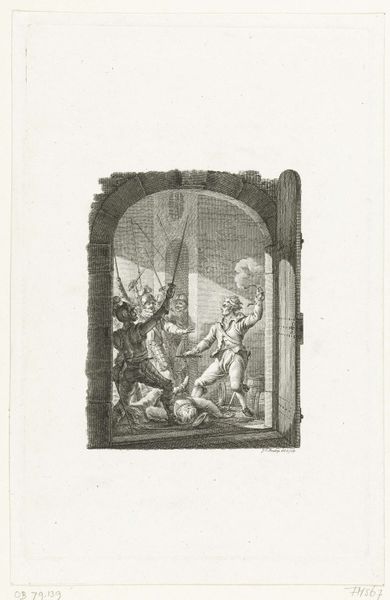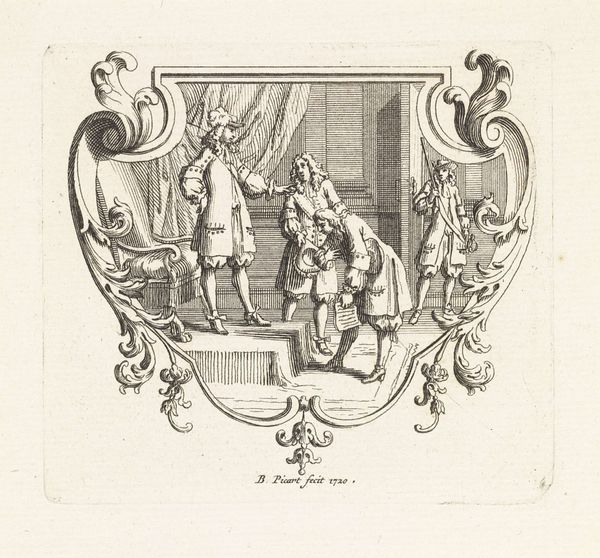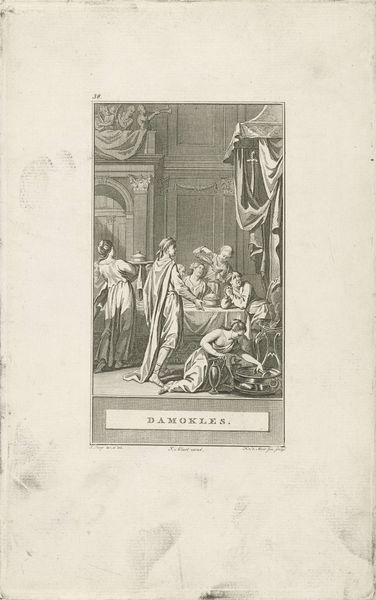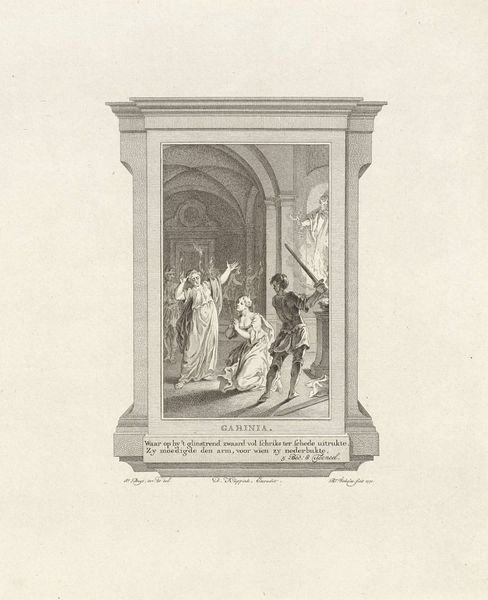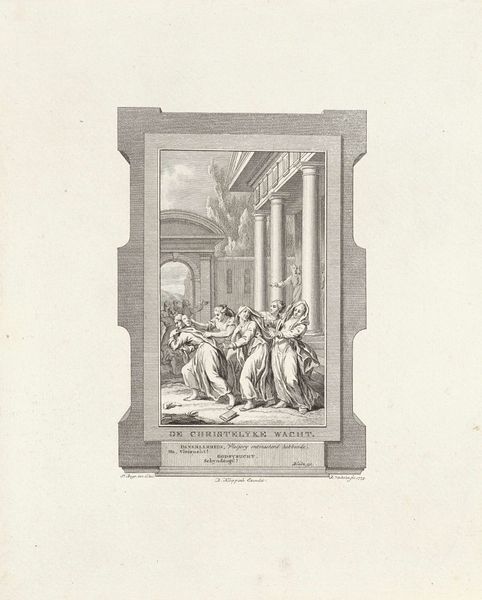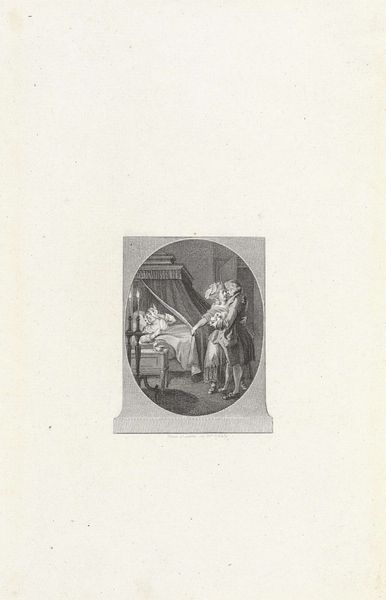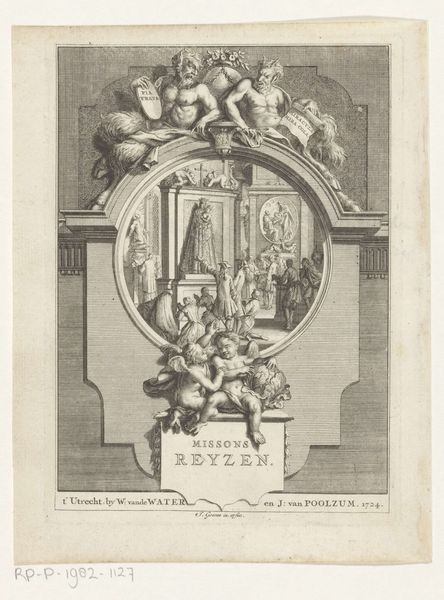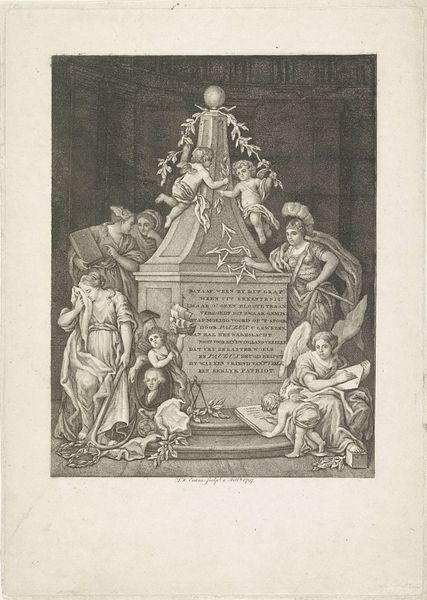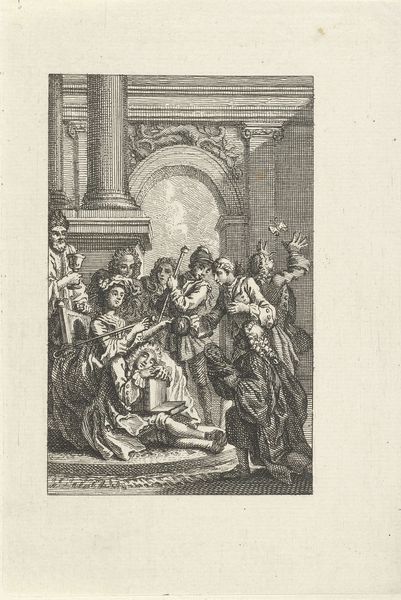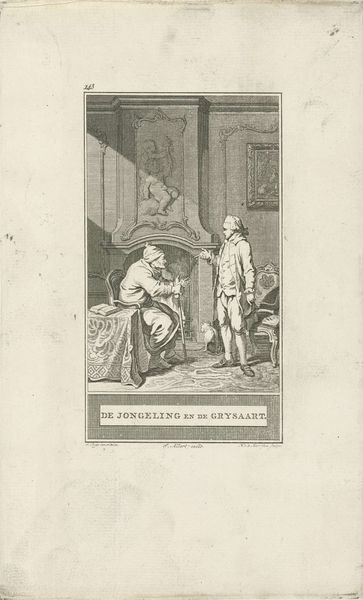
Dimensions: height 267 mm, width 218 mm
Copyright: Rijks Museum: Open Domain
Curator: This print, "Alzire buigt voor Don Gusman," created around 1770 by Reinier Vinkeles, captures a poignant moment through engraving, typical of its time. What are your initial thoughts on encountering this piece? Editor: Well, the overwhelming sense is one of tension, really. The stark contrasts created by the engraving heighten the drama—the way the light focuses so intensely on Alzire makes her vulnerability palpable. Curator: Vinkeles' process in creating this engraving allows us to understand the material conditions under which such images circulated. Prints like these made art accessible, functioning almost like newspapers, conveying narratives to a wider audience. Note the framing and crisp lines typical for the time period. Editor: Absolutely. And looking at that narrative, it's difficult not to read into the power dynamics displayed. The kneeling figure, the armed men looming behind…it speaks volumes about colonial power structures and forced conversion, doesn't it? Alzire’s body language communicates the duress placed on her. Curator: The cross above the doorway and other such Baroque-era religious elements would likely reinforce its Christian messages for contemporary audiences. These engravings were about more than aesthetic pleasure; they were tools for reinforcing social order and moral values. It speaks to a highly refined skillset and organized division of labor for disseminating powerful narratives, both religious and historical, at scale. Editor: But even within that structure, one has to consider Alzire's agency. Is she simply a passive figure, or does her act of defiance—choosing conversion over death, perhaps—offer a form of resistance, a reclamation of sorts within oppressive circumstances? This brings up themes about cultural resilience in the face of colonialism. Curator: Indeed. Thinking about Vinkeles’ choices – the precision of the lines, the dramatic use of light – reveals a calculated effort to engage the viewer emotionally and ideologically. He isn't just depicting a scene; he's constructing a moral argument. It speaks volumes about the economy that produces them, about artistry being channeled and repurposed for moral purposes, and in some sense, commodified for mass consumption and mass ideological production. Editor: Looking at it again, I’m struck by how effectively the artist communicates such complex themes within this confined format. The interplay between the personal and the political here is profound. Thank you for allowing me a new reading of these complicated meanings behind artistic and colonial legacies. Curator: The material and methods do offer insight into how ideas, not just images, were manufactured.
Comments
No comments
Be the first to comment and join the conversation on the ultimate creative platform.
